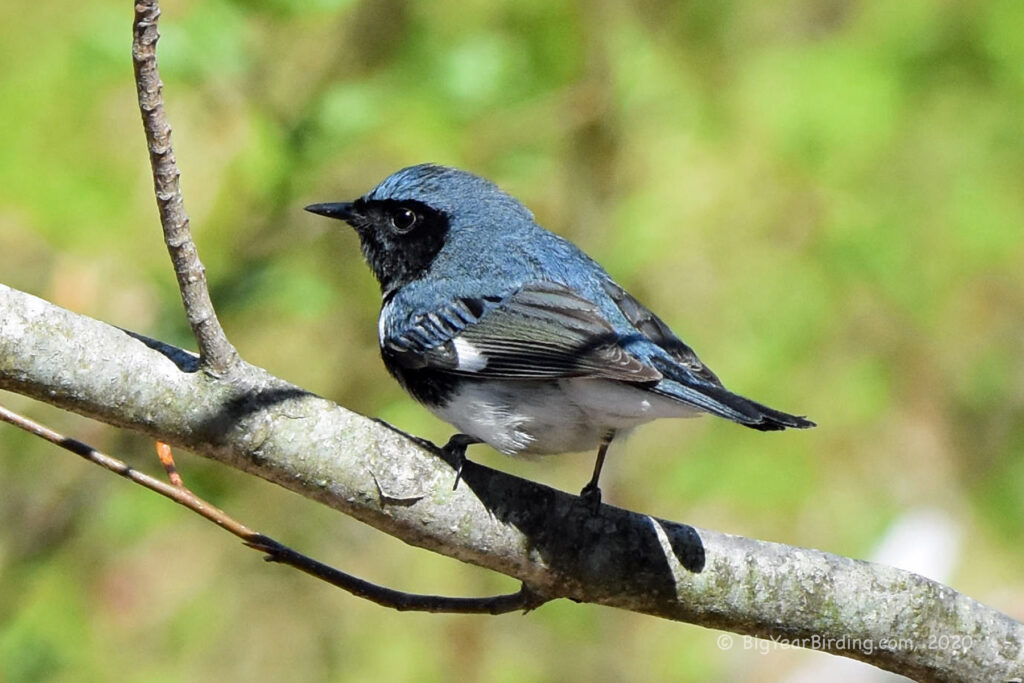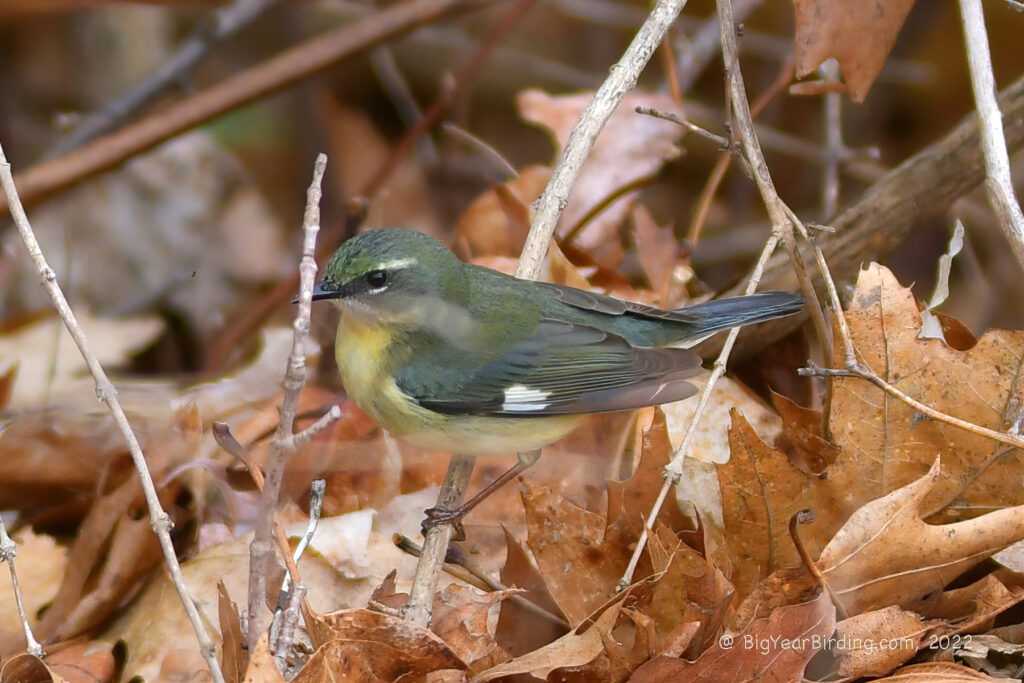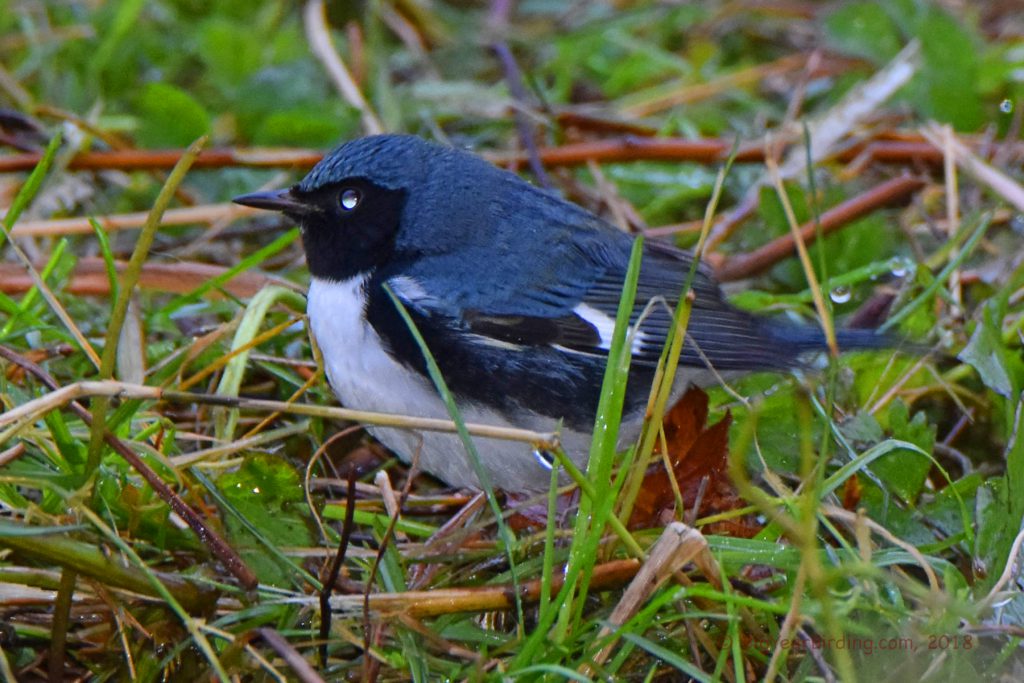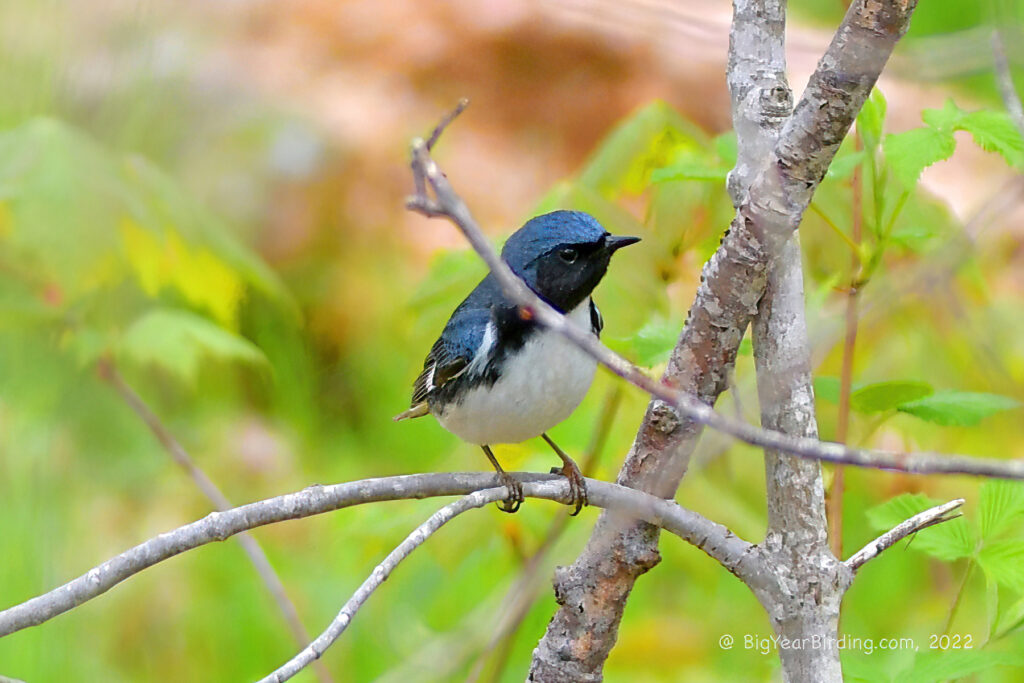
The Black-throated Blue Warbler (Setophaga caerulescens) is a small passerine bird found in eastern North America. Adult males have striking black plumage on the throat, face, and upperparts, with a bright blue back, wings, and tail. They have a white belly and a white patch on the wings. Females are duller in appearance, with a greyish-olive back and wings, and a yellowish throat and breast. Adults measure around 5-5.5 inches in length and weigh between 0.3-0.4 ounces.

Black-throated Blue Warblers breed in the eastern United States and southern Canada, and migrate to the Caribbean and Central America for the winter. They can be found in a variety of forest habitats, including deciduous and mixed forests, and are often seen foraging in the midstory and understory of trees for insects and spiders. During migration, they may be found in a wider range of habitats, including urban and suburban areas.
One way to distinguish the Black-throated Blue Warbler from similar-looking species is by its unique song. Males have a high-pitched, buzzy song that consists of two distinct phrases, often described as “zee-zee-zee-zoo-zee” or “I’m so lazy.” They may also give a sharp “chip” call note when disturbed or alarmed.
The Black-throated Blue Warbler is monogamous and pairs will defend their territory during the breeding season. Females build a small, cup-shaped nest in the fork of a tree, which is lined with fine grasses and hair. They lay 3-5 eggs, which hatch after about 11 days. The young fledge after about 9-12 days and are fed by their parents for several more weeks.

Overall, the Black-throated Blue Warbler is a charismatic and easily recognizable bird that is popular with birdwatchers and nature enthusiasts. Its striking plumage, unique song, and interesting behavior make it a favorite among many who encounter it during its breeding or migration periods.

